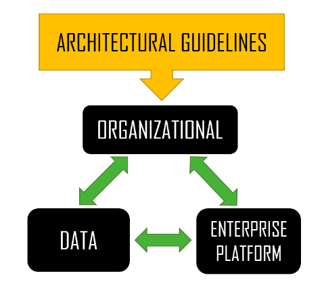Bootstrap Azure Subscription for DevOps
In our previous Food For Thought blog we deep-dived into the business question where to put your data platform, in the cloud or on-premise. No matter your choice, architectural guidelines are crucial to deliver a consistent platform and adding business value.
Crafting a data solution for an organization requires a well-defined architecture based on solid guidelines to maximize its value. Simply providing requested information may seem sufficient at first, but ensuring a shared understanding of data definitions is crucial.
Guaranteeing consistency in the face of change, addressing security concerns, and managing new requests are challenges that demand a consensus on architectural guidelines. Without such consensus, a sustainable solution that effectively handles these issues is not possible. Defining architecture and guidelines is about establishing a foundation for seamless adaptation to evolving data and analytics demands in organizations.

Defining architectural guidelines comprises a few subjects; organizational architecture, data architecture & platform enterprise architecture. Establishing and implementing these will add great value to data landscape and business. In the following sections we will elaborate on each type of architectural guideline in more detail.
First, your organization should be ready to implement and make effective use of a data & analytics solution. Architectural guidelines for an organization delineates teams, roles, and responsibilities. Thereby ensuring a structured setup conducive to a data and analytics solution. Do you prioritize financial reporting from ERP systems or steer with (near-) real-time data for swift decision-making? These choices will require a different organizational architecture to produce the best outcome in the end.

The architectural guidelines for data describe the data definitions, security and processes. With these in place, the organization understands the data domains.
Data Architecture can be split into 3 topics: data management, data migration & transformation, and data governance.
Architectural guidelines for data management will enable the effective use of data by describing definitions, naming conventions, business processes and complexity. This will help to understand how data entities are being leveraged by business domains, how they are managed, and where they are located. Be explicit in the conventions set for the data fields and standardize on datatypes.
Architectural guidelines for data migration & transformation focus on describing the ability to transform the data from sources, data definitions and business requirements, while keeping data quality at a high standard. It defines where transformations should take place and how changes in data sources are accepted. Also, it defines migration and recovery processes in case of data disruption.
Architectural guidelines for data governance is about the security components of the data. Next to this, it describes; who is responsible for accessing data, who is able to receive data and who is owning the data definitions across the company. Functionally, this is tackled by assigning specific data owners and data stewards in the organization to own these topics.
The architectural guidelines for a robust platform, aligned with enterprise needs, safeguards against shifting priorities, ensuring long-term savings. Clear understanding of requirements prevents investing time in tool demos or concepts partially aligning with the strategy. An ideal platform architecture is scalable, flexible, and robust. Designed to adapt to changes while remaining stable, available, and cost-effective.
It should effortlessly accommodate new requirements, enabling easy adjustments or extensions with new features. For instance, gaining real-time insights from manufacturing execution systems (MES) is crucial for proactive decision-making. Designing a platform that seamlessly integrates real-time data processing with batch data processing prevents delays and empowers swift responses to day-to-day operations, averting potential issues.
Defining architectural guidelines for your overall architecture should be the first topic on your list. Having these in place enables you to define a comprehensive data & analytics architecture that enables you and your organization to achieve your strategic goals through data. This will help define structure, be more cost-effective, and prevent miscommunication in your data journey. Thereby enabling you to get a clear vision and apply focus towards the data-driven company.